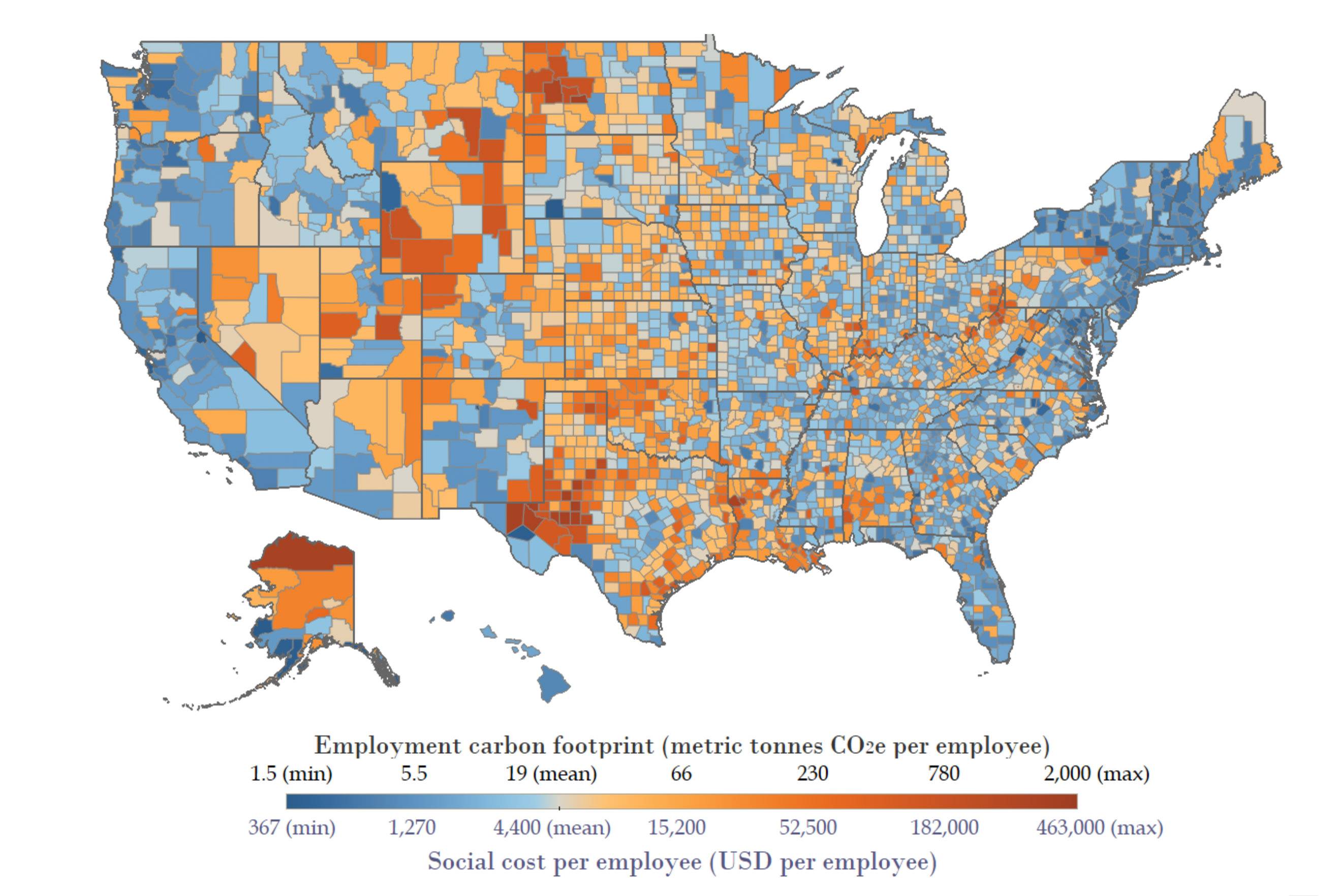
COURTESY OF THE RESEARCHERS
“The impact on jobs of the energy transition is not just going to be where oil and natural gas are drilled,” says Christopher Knittel, an economist at the MIT Sloan School of Management and coauthor of the paper. “It’s going to be all the way up and down the value chain of things we make in the US. That’s a more extensive, but still focused, problem.”
Using several data sources measuring energy consumption by businesses, as well as detailed employment data from the US Census Bureau, Knittel and Kailin Graham, a master’s student in the Technology and Policy Program, calculated the “employment carbon footprint” of every county in the US.
“Our results are unique in that we cover close to the entire US economy and consider the impacts on places that produce fossil fuels but also on places that consume a lot of coal, oil, or natural gas for energy,” says Graham. “This approach gives us a much more complete picture of where communities might be affected and how support should be targeted.”
He adds, “It’s important that policymakers understand these economy-wide employment impacts. Our aim in providing these data is to help policymakers incorporate these considerations into future policies.”
